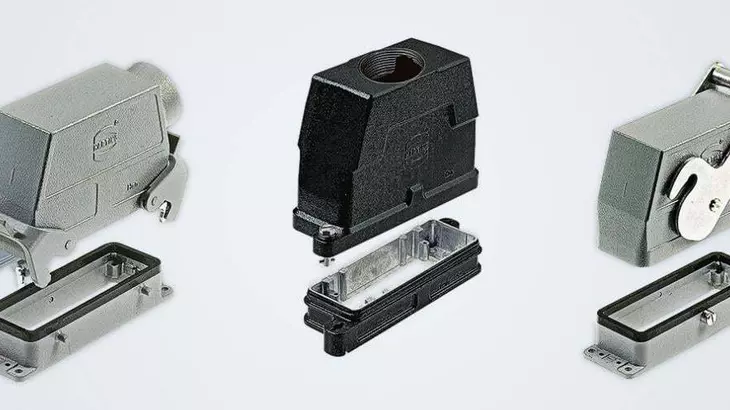Knowledge about smart connectors
What are smart connectors?
Smart connectors are connectors with intelligent additional functions that can transport, process, store and forward data to other systems/units. The necessary work is performed by microprocessors or memories on the lower levels of machines and systems. Smart features are used to identify machine parts and ensure safety, e. g. by checking the locking status of the connector, measuring performance and making the measurement results available for predictive maintenance or protecting components against overload/overvoltage.
What types of smart connectors are there?
Smart connectors differ in terms of function and type of intelligent components. Intelligence is being introduced in the form of modules for modular connectors. Another option is to upgrade connectors, housings and/or insulators with sensors and entrust them with additional tasks.
Surge protection through modular connectors for electronic end devices
Mini-switches/modules integrated in connectors for Ethernet distribution
Profinet and CAN ID modules for component identification and decentralised storage of machine-relevant data
Status monitoring of voltage, current, power and temperature in the module, generation of data records for condition monitoring, e.g. of the system cabling.
How do smart connectors work?
Smart connectors have sensors, small processors or data storage devices on board, for example. Temperature, current, proximity, touch or force sensors are possible. Properties such as voltage, pressure, current, power or temperature are measured. The sensors are either housed separately in the connector housing, together with small computing units and other electronic components, or they are located in their own modular connector, which is part of a larger interface. The sensor data is transmitted to the system monitoring/monitoring systems via physical cable, WLAN or Bluetooth communication.
Who uses smart connectors where?
Smart connectors are used in mechanical engineering to identify individual processing sections of machines and systems and make them transparent. Specialised connector modules read, write and store data locally and communicate with other industrial-grade components using common protocols. They identify aspects of machine processes and are close to the system parts about which they collect information.
Wherever downtimes with high follow-up costs can occur in the printing or automotive industries, for example, it is particularly important to utilise smart functions. The aim is to avoid failures in advance.
Smart connectors perform their function in a decentralised manner at the lower level of machines and systems. Temperature data, serial numbers of machines and their components, IoT statuses, service life or operating hours, and who was the operator at what time can be documented.
Intelligent connectors can also be used to protect control cabinets in data centers: A miniature fuse in a signal interface ensures that in the event of a fault on an M12 connector, the path to the downstream control system is cut off. A corresponding red LED lights up on the connector.
If a fuse has blown, this can be recognised from the outside by the red light without opening the control cabinet. A defective fuse can be replaced more quickly.
What are the advantages of smart connectors?
Smart connectors are located where interfaces are already planned anyway. The smart additional functions do not increase the space requirement, or not significantly. Smart connectors allow the hardware for system monitoring to be arranged in a decentralised manner, close to important components. This can relieve the burden on centralised monitoring systems for machines and systems. When monitoring system components such as cabling, impairments to the energy supply, for example due to cable kinks, cable breaks or a lack of power supply, can be detected and rectified at an early stage - before costly, time-consuming system downtimes occur. What do I need to look out for when selecting smart connectors?
The connector must be able to use the same protocol as the rest of the system – so that it can communicate with the other components. The data that is collected must correspond to what the machine or system requires.
The temperature limits of the connector must match the temperatures in the system environment.
It can be useful to plan for future expansions and to plan dummies for the modular interface accordingly.


